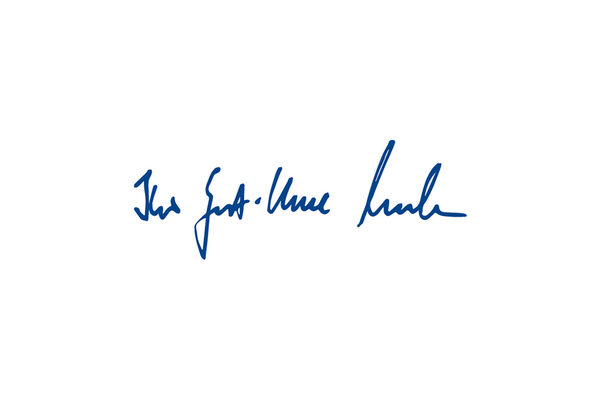Column in December 2025
Christmas greetings from the Lord Mayor
Dear people of Wiesbaden,
The Advent spirit is enchanting our city: for a few days now, the shooting star market has once again been attracting numerous people to Schlossplatz, people are busy ice-skating on the Bowling Green and the Winterstubb with its Ferris wheel is creating a pre-Christmas atmosphere on Mauritiusplatz. For families, the Kindersternschnuppenmarkt on Luisenplatz is once again a special experience this year.
Not only these Christmas locations are festively decorated - our city center also provides an atmospheric ambience with the well-known lily lighting. To make it easier for people to get to the city center, we are once again offering free use of buses and trains in the Wiesbaden city area on Advent Saturdays. We also offer discounted parking in four city-operated parking garages. You can find an overview of the other numerous offers, such as the free gift-wrapping service or the shooting star shuttle, which is operated by the "THermine" light rail service, at wiesbaden.de/weihnachten.
All these offers contribute to a lively Advent season. At the same time, it is important to me to remind everyone of what Christmas stands for - namely charity and being there for one another. These values are lived out in our city in families, clubs, charitable organizations and in our daily interactions - and not just during the Christmas season. I can regularly see this for myself when I am out and about in the various parts of the city. It is always impressive to see the dedication with which the people of Wiesbaden work for the well-being of their fellow human beings. Being there for one another can be seen in many different ways in voluntary work, but also in the private sphere: for example in caring for relatives - or in everyday gestures that may seem small, but can brighten someone's day. I would like to take this opportunity to thank everyone who makes Wiesbaden a city of togetherness.
For this togetherness to succeed, however, good framework conditions are needed. This is where the city comes in: Its central task is to ensure and strengthen social cohesion. We have therefore continued to invest in the expansion of social infrastructure this year. This is clearly visible in construction projects such as new schools, daycare centers, district centers, nursing homes for the elderly, playgrounds and sports facilities. At least as important, however, are the numerous advisory services for different population groups and life situations, work with children and young people in our districts, events for senior citizens and much more.
Especially at a time when many people feel uncertain or stressed, it is important that the city offers orientation and reliability. That is why we rely on actions that create trust and make it clear that the concerns of all sections of the population are taken into account. We will therefore continue to expand the social city in the coming year - because people are the top priority in Wiesbaden.
It is therefore also important to me to say thank you to those who ensure that our city runs smoothly, and not just in the busy pre-Christmas period: be it the emergency services of the blue light family, the drivers and waste disposal companies, the employees in care facilities and hospitals, or those working in the retail and catering sectors. And let's not forget our colleagues in the city administration, who are on duty for the citizens every day in a wide variety of fields.
I wish you a peaceful and relaxing Christmas season and a happy New Year. May the holidays give you space to spend quality time with your loved ones and find peace and quiet.
Sincerely
Gert-Uwe Mende
Lord Mayor
Contact us
Department I - Department of the Lord Mayor
Address
Schlossplatz 6
65183 Wiesbaden
Postal address
65029 Wiesbaden
Arrival
Notes on public transport
Bus stop Dern'sches Gelände, Luisenplatz and Wilhelmstraße.
Telephone
- +49 611 314335
- +49 611 313901
Information on accessibility
- Barrier-free access is available
- The WC is barrier-free

